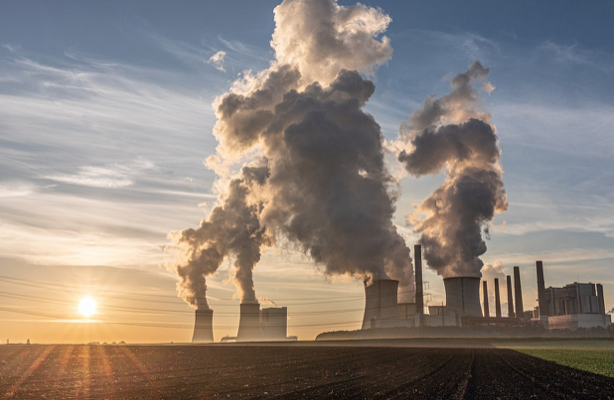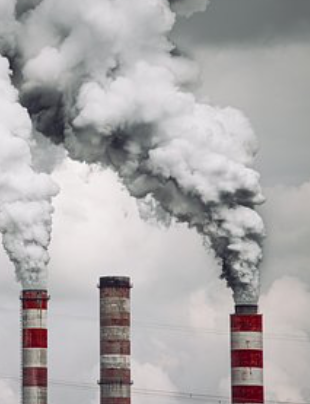by Fred Fuld III
Carbon capture, also known as carbon capture and storage [CCS] or carbon capture, utilization, and storage [CCUS], is a technology that aims to mitigate the release of carbon dioxide, CO2, into the atmosphere, a major contributor to climate change. It involves capturing CO2 emissions from industrial processes, power plants, and other sources, and then storing or utilizing the captured carbon to prevent its release into the atmosphere.
The process of carbon capture typically involves three main steps: capture, transportation, and storage/utilization.
- Capture: The first step is to capture CO2 emissions from the source. Various techniques are used for capture, including:
- Post-combustion capture: This method involves removing CO2 from the flue gas emitted after the combustion of fossil fuels. It typically employs chemical solvents or absorbents to capture the CO2.
- Pre-combustion capture: In this approach, the fuel is converted into a mixture of hydrogen and CO2 before combustion. The CO2 is then separated from the hydrogen, allowing for capture.
- Oxy-fuel combustion: This method involves burning fossil fuels with pure oxygen instead of air. The resulting flue gas primarily consists of CO2 and water vapor, making it easier to capture the CO2.
- Direct air capture: This technique involves extracting CO2 directly from the ambient air using chemical sorbents or other processes. It can be used to capture CO2 from diffuse sources or to remove historical emissions.
- Transportation: Once the CO2 is captured, it needs to be transported to the storage or utilization site. Transportation methods include pipelines, ships, or trucks, depending on the distance and quantity of CO2 being transported.
- Storage/Utilization: The captured CO2 can be either stored underground or utilized for various purposes.
- Storage: CO2 can be injected deep underground into geological formations such as depleted oil and gas fields, saline aquifers, or coal seams. These formations act as storage reservoirs, trapping the CO2 and preventing its release into the atmosphere. The CO2 may be stored in a supercritical state, where it exhibits properties of both a gas and a liquid.
- Utilization: Instead of storage, captured CO2 can be used for various purposes. It can be utilized in enhanced oil recovery (EOR), where the CO2 is injected into oil reservoirs to enhance oil production. Additionally, CO2 can be used in the production of chemicals, fuels, building materials, or other industrial processes.
In the energy sector, several prominent companies have made significant strides in carbon capture technology. Among these industry leaders are Equinor (EQNR), NRG Energy (NRG), Shell (SHEL), Chevron (CVX), Occidental Petroleum (OXY), Fluor (FLR), and Schlumberger (SLB), each of which has dedicated small divisions focused on advancing carbon capture initiatives.
FuelCell Energy, Inc. (FCEL) is developing a carbon capture system in partnership with Chart Industries, Inc. (GTLS) . FuelCell has a $931 market cap and is currently generating negative earnings. The company has about $69 million in long term debt but $458 million in cash.
In regards to pure plays, Aker Carbon Capture ASA (AKCCF) is a Norwegian company that specializes in carbon capture, utilization, and storage technologies. Aker Carbon Capture is a subsidiary of Aker ASA, a diversified Norwegian industrial investment company.
The company focuses on developing and commercializing carbon capture solutions to help reduce greenhouse gas emissions. Aker Carbon Capture offers various technologies and solutions for capturing CO2 emissions from industrial processes, power plants, and other sources. These solutions encompass both post-combustion and pre-combustion capture methods.
Aker Carbon Capture aims to facilitate the transition to a low-carbon economy by enabling industries to capture their CO2 emissions and either store the carbon underground or utilize it for other purposes, such as enhanced oil recovery or the production of valuable products. The company’s technologies aim to provide efficient and cost-effective solutions for reducing carbon emissions across different sectors.
This $749 million market cap company is currently generating losses, and should be considered speculative. The stocks trades over-the-counter.
Delta CleanTech Inc. (DCTIF), headquartered in Calgary, Canada, is a company primarily focused on carbon capture. With a strong emphasis on sustainability, Delta CleanTech engages in various businesses related to CO2 capture and management. Their comprehensive offerings include CO2 capture solutions for CO2-enhanced heavy oil production, coal and gas power generation, and industrial food-grade CO2 markets. They employ cutting-edge technologies like LCDesign, PDOengine, and DeltaSolv to provide efficient and effective solutions in the field of carbon capture.
In addition to their expertise in carbon capture, Delta CleanTech also offers a range of supporting systems and services. Their Delta Purification system encompasses innovative technologies such as the Delta solvent reclaiming system and Delta glycol reclaiming system. These systems enable the reclamation of amine-based solvents used in natural gas processing and CO2 capturing processes, as well as the reclamation of glycols like mono-ethylene glycol and tri-ethylene glycol used for natural gas dehydration, cooling, and anti-freeze processes.
Recognizing the importance of hydrogen as a clean fuel source, Delta CleanTech is involved in the development of hydrogen fueling stations. They aim to contribute to the growth and adoption of hydrogen as an alternative energy option. Also, Delta CleanTech actively participates in the development, verification, and trading of CO2 offset credits.
This is an extremely low cap company at $2.2 million and should therefore be considered extremely speculative. The company is currently generative negative earnings.
A less risky alternative that would provide more diversification would be carbon capture related Exchange Traded Funds. There are a few to choose from:
- KraneShares Global Carbon (KRBN)
- VanEck Vectors Low Carbon Energy ETF (SMOG)
- iShares MSCI ACWI Low Carbon Target ETF (CRBN)
Carbon capture technologies are still being developed and refined, and their widespread deployment is a subject of ongoing research and investment. The ultimate goal is to reduce greenhouse gas emissions and help mitigate the impact of human activities on climate change by capturing and safely storing or utilizing CO2 that would otherwise be released into the atmosphere.
Disclosure: Author didn’t own any of the above at the time the article was written.


